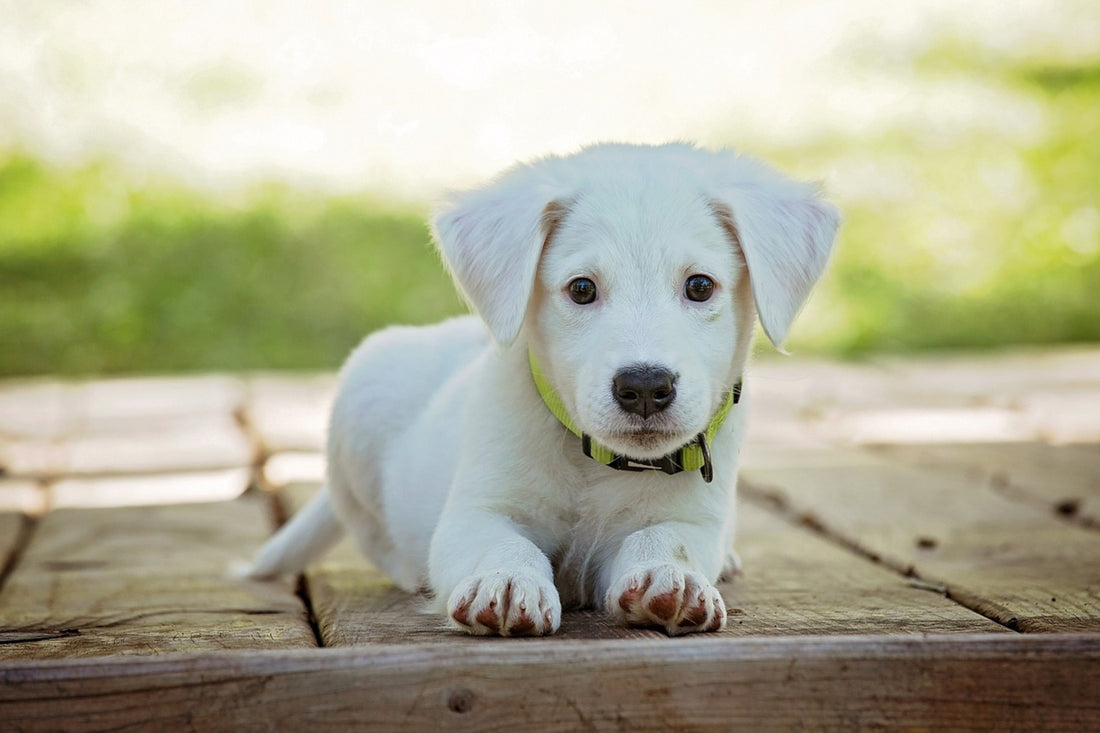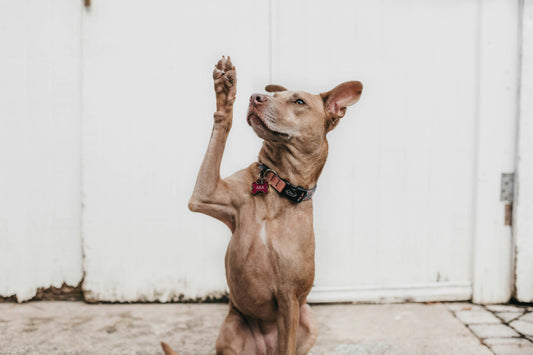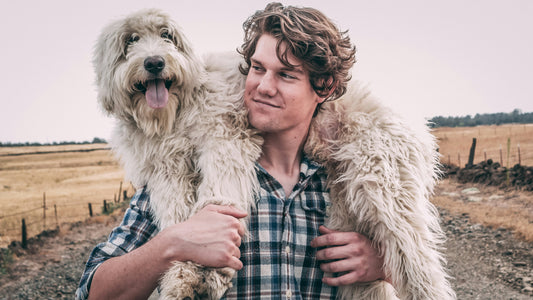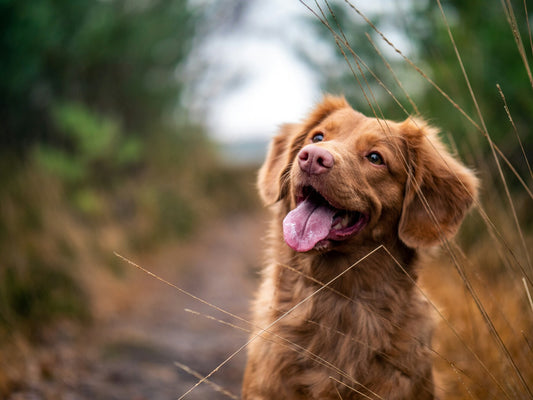Understanding and Treating Warts in Dogs: An In-Depth Guide

Warts on dogs are more common than you might think, but often misunderstood. In this guide, we’ll tell you all you need to know about these pesky skin growths. Stick with us to learn how to identify, and treat these growths but also how to support your dog’s immune system to prevent future occurrences.
What Are Dog Warts?
Warts, or canine papillomas, are benign skin growths commonly found on a dog’s skin and mouth. Unlike other skin growths, warts are typically small, rough-textured, and may appear cauliflower-like. They are especially prevalent in young dogs whose immune systems are still developing.
There are various types of warts that can appear on dogs. Some are smooth and flat, while others are more raised and bumpy. Their appearance and texture can vary significantly, making it important for pet owners to recognize these differences. Understanding these variations is key in identifying whether a growth on your dog’s skin is a harmless wart or something more concerning.
Causes of Warts in Dogs
The primary culprit behind the development of warts in dogs is the canine papilloma virus (CPV). This virus is relatively common and can lead to the growth of warts, particularly in young dogs and those with weakened immune systems. CPV is a species-specific virus, meaning it affects dogs but is not typically a threat to other animals or humans.
Several factors contribute to the development of warts in dogs. Age is a significant factor, as younger dogs, typically under the age of two, often have less developed immune systems, making them more susceptible to the virus. Similarly, older dogs with declining immune health may also be at increased risk. Environmental exposure plays a role too; dogs that frequently socialize with other dogs at parks or kennels may have higher exposure to CPV.
How to Spot a Dog Wart
Recognizing warts on your dog is the first step towards proper treatment and care. Warts can appear anywhere on a dog’s body, but they are most commonly found around the dog’s mouth, eyes, and feet. They vary in size and appearance, often looking like small, fleshy cauliflower-like growths. Some may be solitary, while others cluster in groups.
Differentiating warts from other skin conditions or tumors is crucial. While warts are generally benign, other growths may indicate more serious health issues. If you notice a growth that rapidly changes in size, color, or texture, it’s important to consult a veterinarian. Additionally, any growth that seems to cause discomfort or interfere with your dog’s daily activities warrants a professional evaluation.
Are Dog Warts Contagious?
Yes, dog warts are contagious, but primarily only to other dogs. Canine oral papillomas are contagious among the canine population. It’s important to note, however, that this virus is species-specific and poses no risk to humans or other non-canine pets.
Transmission of the virus typically occurs through direct contact with an infected dog or with objects that have been in contact with infected saliva, such as toys or food bowls. This is particularly relevant in environments where dogs interact closely, like dog parks, kennels, or grooming facilities. Young dogs and those with weakened immune systems are more susceptible to contracting the virus.
When to Consult a Veterinarian
It’s essential to know when a vet’s expertise is needed for your dog’s warts. While many warts are harmless and may resolve on their own, certain situations require professional attention. If you observe rapid growth, a change in color or shape, bleeding, or signs of infection around the wart, it’s time to schedule a vet visit. These could be indicators of more serious conditions, including the possibility of malignant tumors.
Veterinarians use various methods to diagnose warts. A physical examination is the first step, where the vet assesses the wart’s appearance and location. In some cases, a biopsy may be necessary to rule out cancer or other skin diseases. Your vet might also ask about your dog’s recent activities and health history to determine if there’s an underlying cause affecting the immune system.
How to Treat Dog Warts
To treat dog warts, there are several options available, ranging from medical interventions to watchful waiting. The choice of treatment often depends on the wart’s size, location, and any discomfort it may be causing your pet.
- Surgical Removal: For warts that are large, bothersome, or located in areas where they might cause injury (like the feet), surgical removal might be recommended. This procedure is typically straightforward and can often be done under local anesthesia.
- Cryotherapy: This treatment involves freezing the wart with liquid nitrogen. It’s less invasive than surgery and is often used for smaller warts or those in sensitive areas.
- Laser Therapy: Laser treatment can be an effective way to remove warts, especially in hard-to-reach areas. It’s a minimally invasive method that involves using a concentrated beam of light to eliminate the wart tissue.
- Immunomodulatory Therapies: In some cases, especially for young dogs with multiple warts, veterinarians might suggest therapies that boost the dog’s immune system to fight off the virus.
It’s important to note that many warts, particularly in younger dogs, will resolve on their own as the dog’s immune system matures. In these cases, your vet might recommend a ‘wait and see’ approach, monitoring the warts for any changes.
Home Care and Natural Remedies
Managing warts in dogs at home can be an effective way to ensure your pet’s comfort and prevent potential complications. Here are some home care strategies and natural remedies:
- Maintaining Cleanliness: Regularly cleaning the area around the wart can prevent infection. Use a mild, dog-safe antiseptic cleanser, and ensure the area is dry and clean.
- Boosting the Immune System: A strong immune system can help your dog naturally fight off the virus causing the warts. Consider incorporating immune-boosting supplements into your dog’s diet, but always consult with your vet first.
- Dietary Changes: A well-balanced diet rich in vitamins and nutrients can support your dog’s overall health and immune response. Foods high in antioxidants, like blueberries and carrots, can be beneficial.
- Natural Topical Applications: Some pet owners find success in applying natural substances like apple cider vinegar or castor oil to the wart. These should be used cautiously and never on irritated or open skin.
- Stress Reduction: Since stress can impact the immune system, maintaining a calm and stable environment for your dog is important. Regular exercise, playtime, and comfortable resting spaces can help reduce stress.
Wart Prevention Measures
Prevention is key when it comes to warts in dogs, especially since papillomas in dogs are quite common. Here are some strategies to help minimize the risk of your dog developing warts:
- Maintain Good Hygiene: Regular grooming and cleaning can help prevent the spread of viruses. Pay special attention to areas where warts commonly appear, such as the mouth and paws.
- Strengthen the Immune System: A strong immune system is your dog’s best defense against warts. Ensure your dog has a balanced diet, gets regular exercise, and consider supplements that boost immune health, as recommended by your veterinarian.
- Vaccination: In some cases, a vaccine against the canine papilloma virus may be available and recommended, especially for dogs that are frequently in contact with other dogs.
- Avoid High-Risk Areas: If your dog is young or has a weakened immune system, it might be wise to avoid dog parks or kennels where the virus is more likely to be present.
- Regular Veterinary Check-Ups: Regular check-ups can help catch and address any health issues, including warts before they become more serious.
The Role of Diet and Supplements in Wart Prevention and Treatment
Diet and nutrition play a crucial role in maintaining your dog’s overall health, including their skin and immune system, which can influence the development and treatment of warts.
- Nutrient-Rich Diet: A balanced diet rich in essential vitamins and minerals supports a robust immune system. Foods high in omega-3 fatty acids, like fish or flaxseed oil, can promote healthier skin and potentially reduce the occurrence of skin growths like warts.
- Supplements: Certain supplements can bolster your dog’s immune response. Vitamins A, C, and E, as well as zinc and selenium, are known for their immune-boosting properties. Probiotics can also support gut health, which is closely linked to immune function.
- Specialized Dog Foods: Some commercially available dog foods are specially formulated to support skin and immune health. These may contain additional supplements or specific ingredients beneficial for dogs prone to skin issues.
Conclusion
In this comprehensive guide, we’ve explored the various aspects of understanding and treating warts in dogs. From identifying what warts look like and understanding their causes to discussing when veterinary care is necessary and exploring treatment options, we’ve covered essential information to help you care for your dog. We’ve also delved into the importance of diet, supplements, and preventive strategies to maintain your dog’s health and minimize the risk of warts.
At Bando, we understand the importance of your dog’s health and well-being. Our range of quality supplements, dehydrated treats, and care products are specifically designed to support your pet’s immune system and overall health. Whether you’re dealing with warts or looking to prevent them, our products offer the right blend of nutrition and care.
We invite you to browse our catalog of supplements and care products for pets. Our team is always ready to assist you in choosing the best products for your furry friend’s needs. Remember, a healthy pet is a happy pet, and at Bando Pets, we’re committed to helping you achieve just that.






